Next to the U.N., a proposed Museum of Democracy … with a casino thrown in?
April 7, 2025, 6:30 a.m.
The casino proposal from the Soloviev Group is among 11 vying for approval in and around the city.
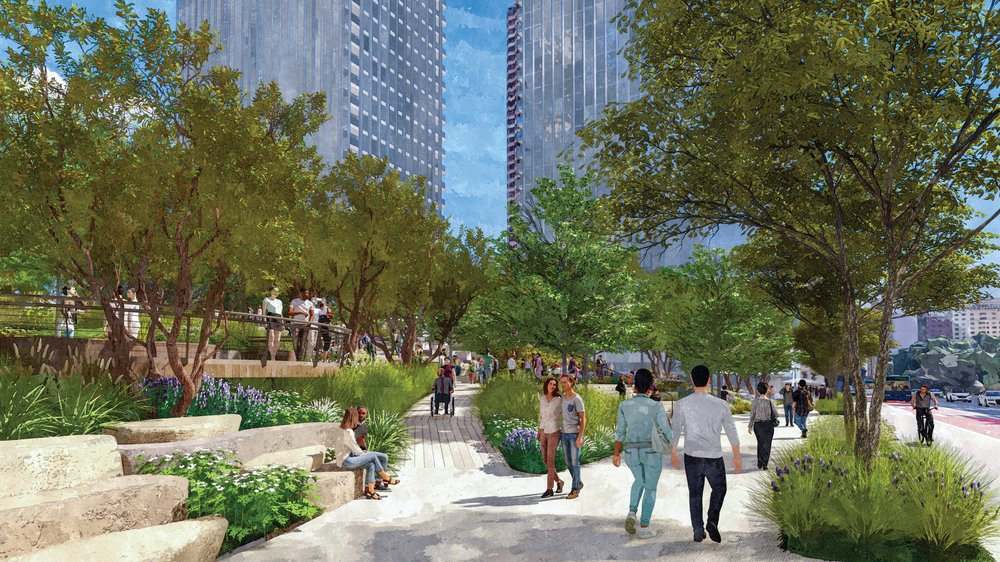
Michael Hershman is the CEO of the Soloviev Group, a company hoping to build a casino and park where many wouldn’t expect: next to the United Nations.
But Hershman is less interested in discussing the nuts and bolts of the site – the 8,000 permanent jobs it would potentially generate, the residential towers that would overlook the East River, the casino itself – than in an attraction he said would define the $10 billion project: a Museum of Freedom and Democracy, at a time when he said democracy is under threat.
“ I just don't think some of the folks in this country are appreciative enough of what we have,” Hershman told Gothamist in an interview. “So I want to stimulate this conversation. And it's a perfect place to do it: New York City.”
The proposed museum is just one component of the 6-acre mixed-use development, Freedom Plaza, that would stretch from 38th to 41st streets east of First Avenue, on the site of the former Con Edison power plant.
It would also include high-rise residential towers, 1,250 hotel rooms, 500 units of affordable housing and parkland. Below street level would be a 295,000-square-foot casino — the moneymaker, as it were, to fuel the aspirations of the museum.
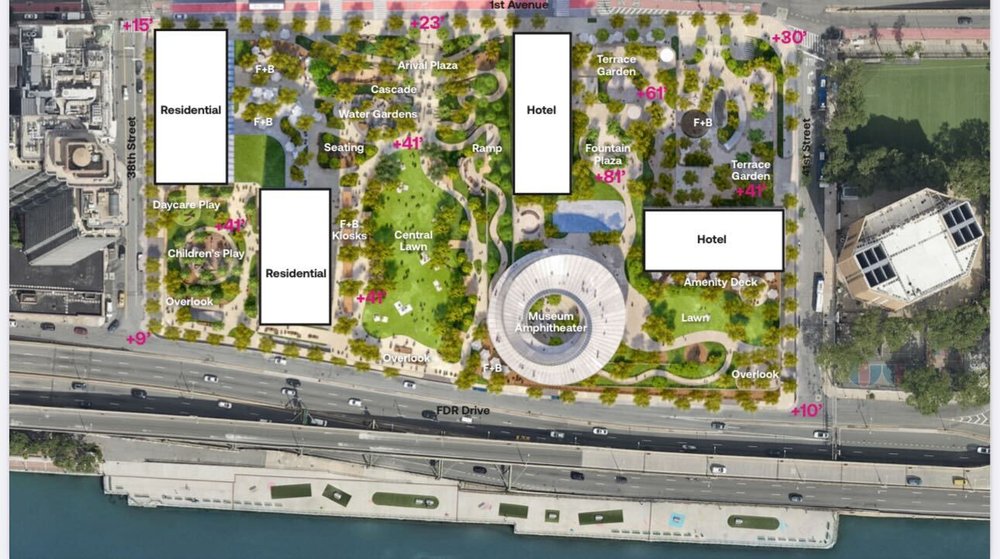
The project is one of 11 competing for a downstate casino license, a process that is expected to end this December. But unlike several others that have faced hurdles in the form of city zoning approvals or defiant state legislators, Freedom Plaza would be built entirely on private property owned by the Soloviev Group.
That distinction potentially eases its path forward in the months ahead, as the protracted process for determining which of the competing projects receives a coveted gaming license comes to a climax over the next several months.
Freedom Plaza, with a casino that would be run by Mohegan, won support from some local residents, who said they were swayed by the plans for nearly 5 acres of green space as well as a commitment that a portion of the project’s profits would flow to the community.
However, it has drawn the ire of other locals, who said they were opposed to the presence of a casino, that too one within spitting distance of the iconic U.N. Secretariat building, and less focused on the museum.
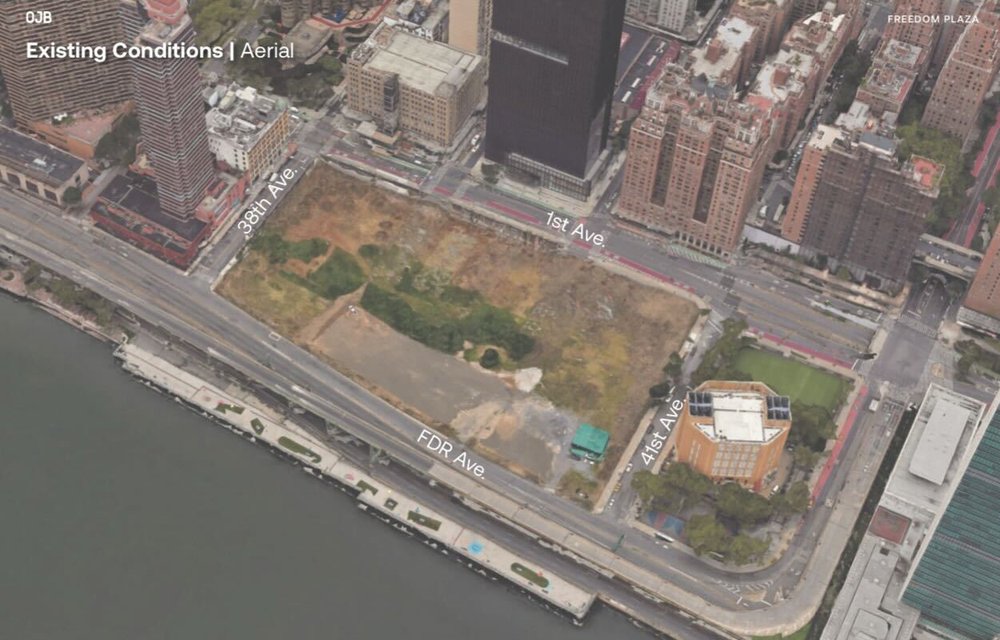
Vandana Nadgar, an area resident, said the Turtle Bay neighborhood was home to many “international families” associated with the U.N. and played host to the world’s leaders every September for the U.N. General Assembly.
“Our neighborhood is quiet and peaceful most of the time,” Nadgar said. “I am afraid that [a casino] might attract an unruly, loud and disruptive crowd.”
Sandra McKee, the head of Manhattan Community Board 6, said the property was privately owned and did not require zoning clearances. As such, it would not be subject to the city’s extensive Uniform Land Use Review Procedure, or ULURP, meaning that board members would not have the opportunity to vote on its merits. So far, McKee said, there had been little in the way of communication between the board and developers.
“ I did receive a phone call and they asked if we'd had any positive feedback from the community and I said, no, we have not,” McKee said.
She added “ we're desperately in need of affordable housing in our district” and that the project should offer “much, much more” than 500 units of affordable housing, given the size of the site. According to city data, 9% of residents in the community district live in poverty, among the lowest proportions any district in the city.
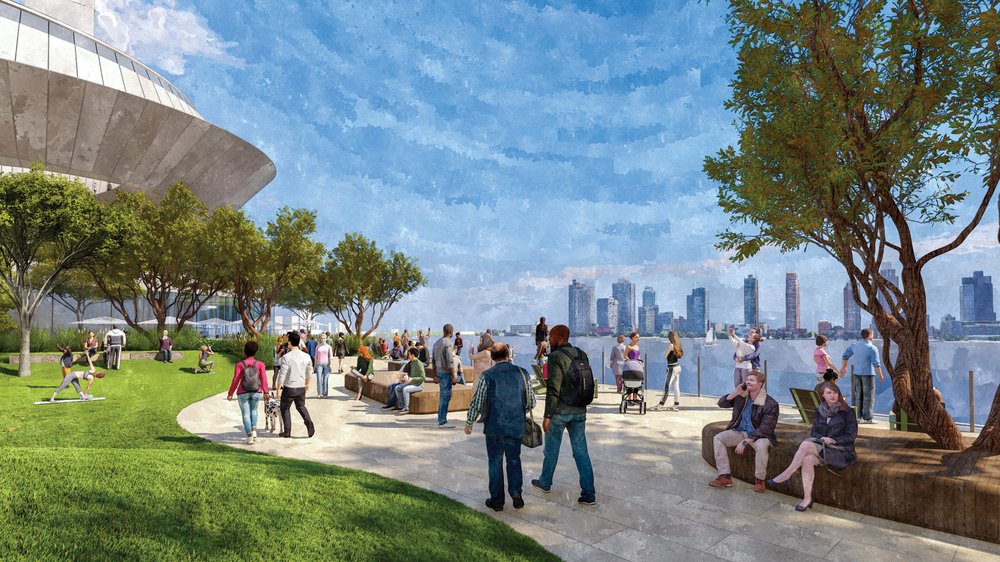
An earlier version of the project had included a Ferris wheel, which McKee said generated significant pushback from the community board. Jesus Perez, the district manager of Community Board 6, said the shifting vision of the developers was not encouraging.
“ It seems rather piecemeal, sort of haphazard, like they're sort of throwing whatever they can at the wall to see what will stick,” Perez said.
Jim Burnett, the president of OJB, the landscape architecture firm contracted by the developers, said the project would include 4.8 acres of parkspace — a “ green blanket of landscape,” in his words — that would include 350 trees, including native and adaptive species.
At its highest, he said, the park would rise 45 to 50 feet over the East River, providing “dramatic” views of the entire area. In keeping with the theme of freedom, an amphitheater would be installed for programmed events and “free speech,” he said.
“It really will be a special place,” Burnett said.
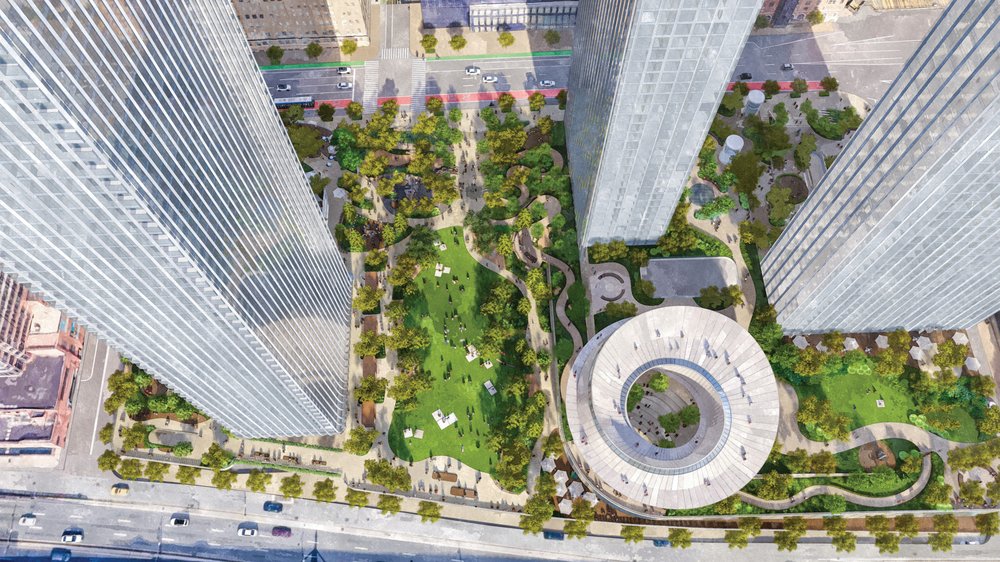
One local resident, Cathy Oberfeld, said she had no opinion about the proposed casino, but said she enjoyed wandering through a lighting spectacle the developer presented last year at the site, “Field of Light,” in which thousands of glowing bulbs were turned on every night.
“It was cool,” Oberfeld said, adding that some of her neighbors saw the lighting spectacle as an inducement to build community support for the casino. “They kind of laughed about it.”
Jon Harari, the president of the Murray Hill Neighborhood Association, said he supported the project, in part because “ there's not that much open space where we live.”
He said Soloviev and its partners had closely engaged with his group and followed through on its suggestions, including a commitment to funnel 2% of the casino’s proceeds into community groups, which he said would amount to a minimum of $5 million annually.
“I think that that's going to be a wonderful thing for the neighborhood association to take advantage of all those resources,” Harari said.
Hershman, the developer, took some of the criticism of the project in stride.
“ I don't know any community board that really wants to have a casino in the neighborhood,” he said, adding that the casino would be built “underground” and not be visible from First Avenue.
“ We want to maintain the character of the neighborhood. We don't wanna bring Las Vegas to the east side of Manhattan,” he said.
Hershman said that as someone who severed in U.S. military intelligence during the Vietnam War and as the son of a World World War II veteran, he “appreciated what America meant to us and what [it] had provided us,” and was increasingly concerned about what he said was the decline of patriotism and an embrace of democratic ideals. The museum, he said, was one way to address the problem.
“ What common purposes do we have? What common goals do we have in the country?” he asked. “Rather than arguing about what we disagree on, let's come together on what we can all appreciate about this.”
Although the project is not subject to the city’s land use review process, community board members and city officials said it will require buy-in from local elected officials, some of whom would constitute a community advisory committee designed to vet each of the projects competing for a downstate casino license.
Projects need to secure two-thirds of votes of each community advisory committee to remain in contention for a license, according to the state’s Gaming Facility Location Board. The board is expected to award up to three downstate licenses by the end of 2025.
Coney Island casino bid sparks sharp debate in NYC planning panel hearing High stakes: NYC casino race heats up as projects vie for approval in 2025